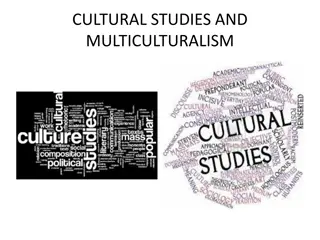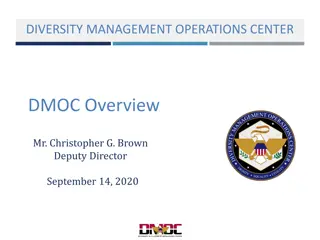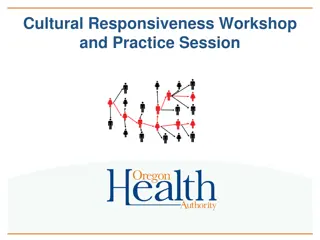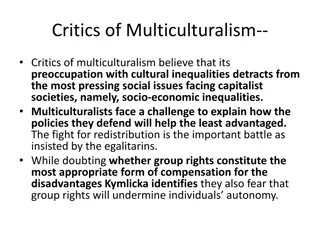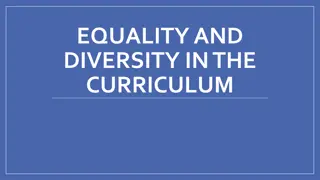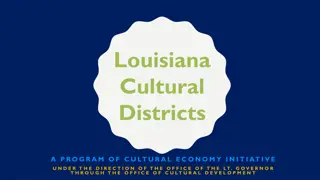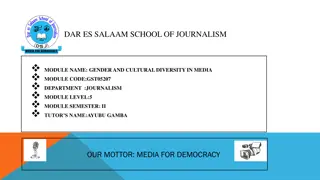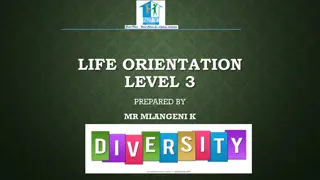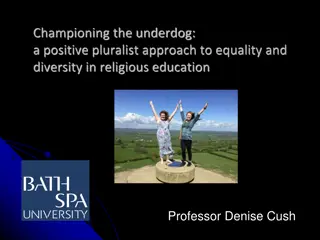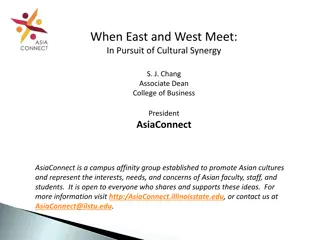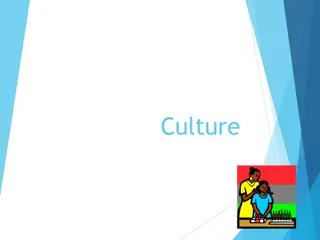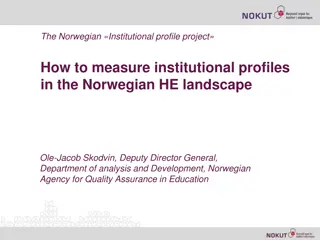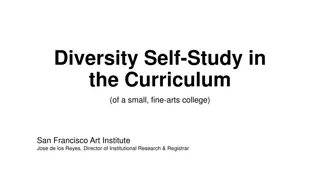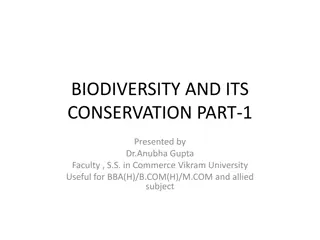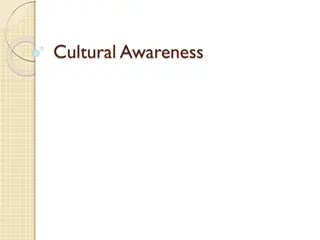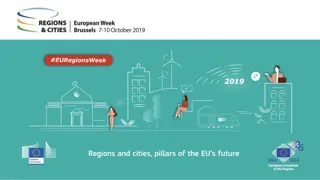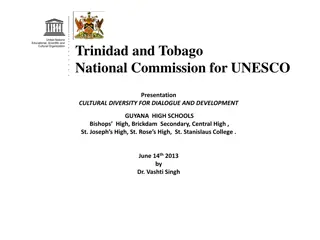Embracing Cultural Diversity in Education
Exploring the essence of culture, the impact it has on daily practices, and the importance of nurturing multicultural understanding in education. Delve into the concept of culture as a kaleidoscope of values, symbols, and traditions shared by diverse groups. Learn how education can foster intercultural sensitivity and develop universal values in students through international-minded curricula. Discover the PYP curriculum's focus on human commonalities, globally transferable concepts, and attitudes for responsible citizenship.
Download Presentation

Please find below an Image/Link to download the presentation.
The content on the website is provided AS IS for your information and personal use only. It may not be sold, licensed, or shared on other websites without obtaining consent from the author.If you encounter any issues during the download, it is possible that the publisher has removed the file from their server.
You are allowed to download the files provided on this website for personal or commercial use, subject to the condition that they are used lawfully. All files are the property of their respective owners.
The content on the website is provided AS IS for your information and personal use only. It may not be sold, licensed, or shared on other websites without obtaining consent from the author.
E N D
Presentation Transcript
I do not want my house to be walled in on all sides and my windows to be stuffed. I want the cultures of all the lands to be blown about my house as freely as possible. But I refuse to be blown off my feet by any. Mahatma Gandhi quotes
Nurturing multicultural understanding in the primary phase
What is culture? My understanding Making connections through the PYP Challenges
What is culture? Patterson (1975) Culture is an identified complex of meanings, symbols, values and norms that are shared consciously or unconsciously by a group of people. Hofstede (1997) Pointed out Culture is a fundamental phenomenon. It affects not only our daily practices: the way we live, are brought up, manage, are managed, and die; but also the theories we are able to develop to explain our practices. No part of our life is exempt from culture s influence .
My understanding of a culture after reading different definitions given by various scholars: Culture is a kaleidoscope of a set of people who share values, symbols, tradition, and spiritual beliefs. It also encompasses art and literature, lifestyle, and ways of living together.
How it can be developed through education: Gellar (2002, p.31) mentioned that a school can be truly international minded If its curriculum focuses on the global perspectives rather than just local and Gives equal importance to develop universal values in the students.
The PYP curriculum Themes based on human commonalities Transdisciplinary skills Globally transferable concepts Attitudes for intercultural sensitivity (universal values) Action to become responsible citizens
Approaches to learning Skills: Communication skill Research Skill Self-management skills Social skills Thinking skills
Action In the PYP, it is believed that education must extend beyond the intellectual to include not only socially responsible attitudes but also thoughtful and appropriate action. Making the PYP Happen pg.25
Challenges Teachers training and initiative approach in the collaborative planning meetings Balancing it out in the Programme of Inquiry Monoculture school Parents workshop/ Parent information sessions
Dalai Lama (2009) The Moral Imperatives of Chance Compassion will show the way India Today, Vol XXXIV no. 12: for the week 17-23, K-9 Connaught Circus, New Delhi , pp. 32 Drennen, H (2002) Criteria for curriculum continuity in international education. In International education in practice eds by M Hayden, J Thompson and G Walker, New York, Routledge Geller, A Ch (2002) International education: a commitment to universal values. In International education in practice eds by M Hayden, J Thompson and G Walker, New York, Routledge Haywood, T (2007) A Simple Typology of International- Mindedness and its Implications for Education The SAGE Handbook of Research in International Education eds by M Hayden, J Levy and J Thompson, London, Sage Publication International Classrooms, IB World magazine of the International Baccalaureate, Jan2008, Issue 52, Middlesex, Haymarket Network, Teddington Studios, Pg. 18, Munro, J (2007) learning Internationally in a Future Context. The SAGE Handbook of Research in International Education eds by M Hayden, J Levy and J Thompson, London, Sage Publica
Ree, H (2004) To Educate the Nations. In To Educate the Nations 2 2nd ed, G Walker, Glasgow, Peridot Press Sampatkumar, R (2007) Global Citizenship and the Role of Human Values. The SAGE Handbook of Research in International Education eds by M Hayden, J Levy and J Thompson, London, Sage Publication Skelton, M (20 02) Defining international in an international curriculum. In International education in practice eds by M Hayden, J Thompson and G Walker, New York, Routledge Teaching without boards, IB World magazine of the International Baccalaureate, Jan2008, Issue 52, Middlesex, Haymarket Network, Teddington Studios, Pg. 12 Walker, G (2004) International education and National systems, 2nd ed, pg 90- 91, Glasgow, Paridot press
Central Idea: Human migration is a response to challenges, risks and opportunities. Lines of inquiries: Concepts: Skills: IB Learner Profile: Attitudes:
Going further: George Walker added that the themes in the PYP helps to develop three characteristics: Capacity to reason Knowledge of self and others A growing sense of global responsibility.




